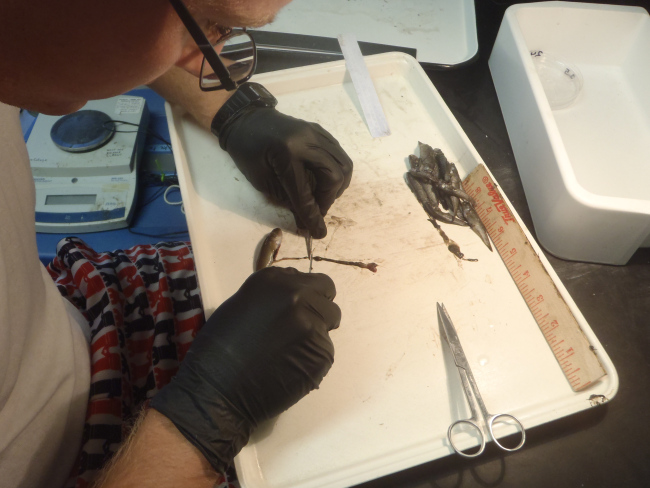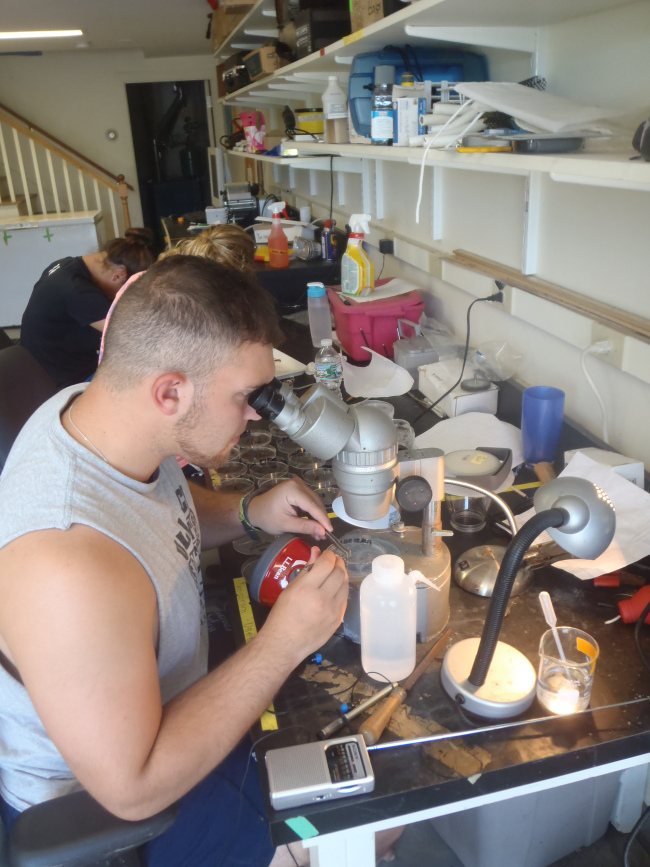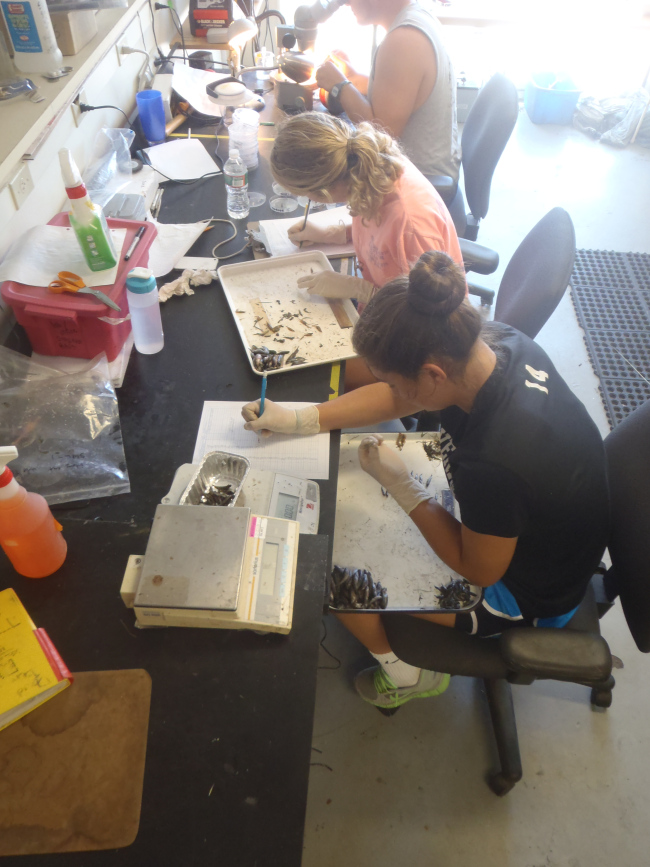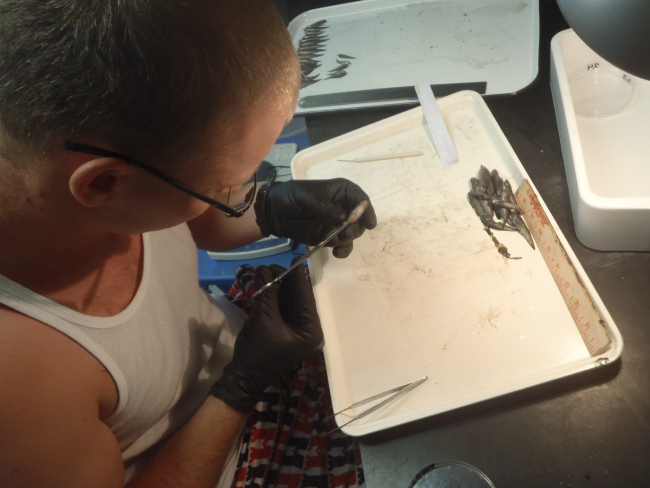Eight short weeks ago I arrived at the Marshview Farm House, my home for the summer.
I would like to think that during the past eight weeks I, along with the other interns, have conquered the marsh. We have been stuck in mud up to our belt buckles; we have been swarmed by armies of no see-ems and greenheads, and we have participated in flume netting at midnight under the full moon. We have spent countless hours measuring fish, weighing plants, and analyzing data. Throughout this process, I have gained a wealth of knowledge, along with valuable experience in both the field and the lab.
My name is David Behringer and I am a rising senior at Washington & Jefferson College, in Washington PA. Although I am still trying to figure some things out, I plan on attending graduate school to earn a degree in fisheries management/biology. This summer I have been working closely with fellow intern Nate Andrews on Dr. James Nelson’s project.
Our focus has been on the demographics of the salt marsh creeks, the diet of the mummichog, and we have also been using length frequency analysis (LFA) to look at growth rates of the mummichog, Fundulus heteroclitus.
Right now we have been working on taking the gut content of the mummichogs to determine their diet. We start by removing the fish’s stomach. Then, using a probe, we gently slide all of the stomach’s content out. Once it has all been removed, we separate the content into detritus/ plant matter and protein using a dissection microscope. The protein and detritus are put in the drying oven and weighed separately. Using this method we are able to determine what percentage of the mummichogs’ diet is protein and detritus, respectively.
Although I was aware that mummichogs are opportunistic omnivores, I was shocked to discover how widespread their diet truly is. These little fish, ranging from 40-80mm, eat almost anything including shrimp, snails, mosquitoes, greenheads, smaller fish, and algae.
And for those of you who are still wondering about the title…
There are approximately 1,790,590 nitrate pellets in each bag of fertilizer. So with some quick math…
1,790,590 pellets
x 616 bags of fertilizer (50 lbs each)
= 1,103,003,440 is the estimated number of fertilizer pellets that we have put into the marsh this summer. Pretty Crazy!
Signing out!




dana haggett
David,
Your blog was a very interesting report on your work with the Tide Project this summer.
The sheer volume of the nitrate was mind boggling. So many fish . . . so many stomachs!
Good luck in your senior year. I am sure that you and your fellow summer scientists have important and inspiring projects ahead.
All the best, dana
Greg
This is really great work!
…but remember, F. heteroclitus do not have stomachs (at least not in the traditional sense of a peptic-HCl producing component).